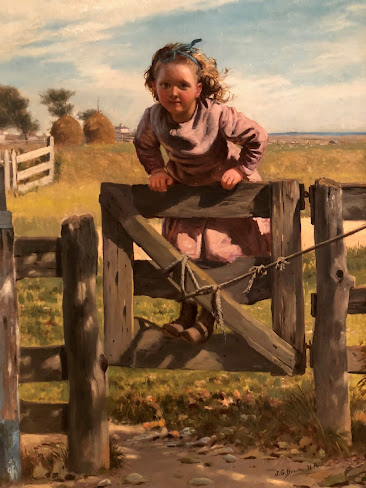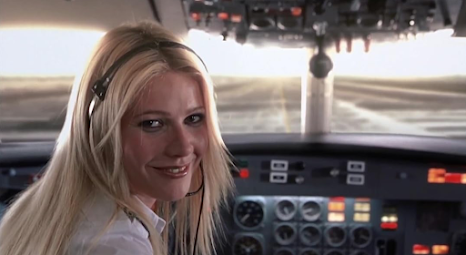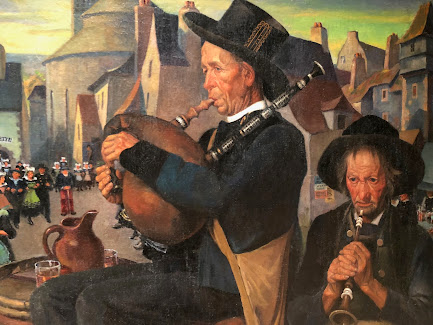There’s something deliciously bleak about a movie that asks you to choose between your family and the planet. It’s like Sophie’s Choice, if Sophie was a gay dad with a concussion and the Nazis were four heavily armed Jehovah’s Witnesses having a collective psychotic break. Knock at the Cabin is M. Night Shyamalan’s latest R-rated philosophical funhouse ride, and I loved it. Four stars—not five, because this isn’t Signs, but not three, because this isn’t The Happening, thank God and all four horsemen.
A Short History of the Apocalypse (Now With Airbnb)
This movie began as a book that terrified people who still pretend reading matters—Paul Tremblay’s The Cabin at the End of the World, a cozy little trauma grenade from 2018. The rights were snapped up before Tremblay could say “royalties,” and Hollywood got to work doing what it does best: sucking the ambiguity out of morally complex material and replacing it with meaningful glances and gritty lens filters.
The original script by Steve Desmond and Michael Sherman earned a prized spot on the Black List—Hollywood’s version of a “We didn’t make this, but aren’t we smart for noticing it?” newsletter. M. Night Shyamalan saw the script, squinted, and said, “I can make this weird.” He then proceeded to do exactly that, rewriting the screenplay, sanitizing some of the moral bleakness, and adding just enough of his patented spiritual melodrama to remind us we are, indeed, in Shyamalan Country: population confused, emotionally bruised, and probably played by Rupert Grint.
Hulks with Soul and the Apocalypse with Eyebrows
Dave Bautista was cast not because he’s a wrestler or a walking protein shake, but because Shyamalan saw Blade Runner 2049 and thought, “That giant man who speaks in whispers could deliver 30 pages of monologue without punching anyone. Perfect.” To his credit, Bautista commits to the role like he’s about to lead a doomsday book club. He’s terrifying and gentle—like a bear who teaches kindergarten.
The rest of the ensemble is equally off-kilter in the best way. Jonathan Groff plays one half of a couple that feels like it probably met at a book signing for The Velveteen Rabbit. Ben Aldridge is the skeptical partner who brings much-needed edge, while Kristen Cui as Wen somehow doesn’t get devoured by trauma. Rupert Grint shows up looking like he just walked off the set of Trainspotting: Hogwarts Edition. And yes, Shyamalan pops up in a cameo, because it’s in his contract and possibly his DNA.
Production was swift and intense. Shot with ’90s lenses to achieve that old-school thriller look, the film’s aesthetic whispers, “You might die, but tastefully.” The cabin is isolated, the camera claustrophobic, and the entire mood is a funeral dirge scored by Herdís Stefánsdóttir, whose name alone sounds like a Norse god of dread.
Apocalyptic Vibes and Critical Chaos
Critics were divided, which is shorthand for “They didn’t know what to do with it.” Rotten Tomatoes gave it a tepid 67%, Metacritic hovered around a nervous 63, and CinemaScore slapped it with a limp “C,” as if audiences wanted Fast & Furious 47 and got The Passion of the Cabin. But buried beneath the critical hand-wringing was real admiration for Shyamalan’s restraint—yes, restraint. The man who once gave us hotdog-loving survivalists in The Happening now delivered a tight, morally agonizing chamber piece where people talk more than they scream.
Some critics complained about the plot holes. To them I say: in a world where billionaires cosplay as astronauts and people still microwave fish in office kitchens, this is the fiction you can’t buy? Please. Shyamalan took a story about personal sacrifice, stripped it of nihilism, and dared to make it, well… oddly hopeful. That’s either bold or certifiable. Maybe both.
The End of the World as We Feel It
Knock at the Cabin won’t be your favorite Shyamalan movie unless you’re the kind of person who meditates with incense made of existential dread. But it will stay with you. It’s tight, eerie, emotionally earnest, and surprisingly tender—like a hostage letter written in cursive. And in a cinematic landscape cluttered with content that goes down like oat milk wallpaper paste, this one dares to provoke, disturb, and—brace yourself—make you feel something.
More than just another entry in the Apocalyptic Airbnb subgenre, it might be remembered as the moment when Shyamalan proved, once again, that the man may be hit-or-miss, but he always swings for the damn fences.
⭐⭐⭐⭐ (4/5 Stars)
#KnockAtTheCabin #MNightShyamalan #DaveBautista #HorrorMovies #PsychologicalThriller #MovieReview #FilmCritic #MustWatch #NowStreaming #MovieNight #SuspenseFilm #ThrillerMovies #ApocalypseMovie #HorrorCommunity #CinemaLovers #FilmTwitter #IndieFilm #MovieBuff #ScreenRant #RottenTomatoes
































